At a construction site in eastern Tokyo in mid-July, the effects of climate change and the challenges posed by Japan’s aging population converged under the capital’s scorching summer sun.
A thermometer on the first floor of an apartment building under construction foretold another sizzling day ahead: At 8:30 a.m., it was already 31 degrees Celsius with humidity of 71%. The heat was even more intense on the still-roofless third floor, where a dozen workers — mostly middle-age and older — toiled away to build two more levels. Many squatted on the concrete that had just hardened, exposed to not only sunlight but heat reflected by the concrete.
“It’s much hotter these days,” said a 63-year-old worker, who has worked in the industry for 40 years. “I suffer from heat illness every year, though it’s been mild enough.”
“Summer beats me the most,” said an 81-year-old traffic guard at the site. He missed the morning meeting that day because he had been so exhausted from his work the day before.
Severe weather made worse by warming is becoming a new normal around the world due to the climate crisis.
Places such as China and Southern Europe have witnessed the kind of intense heat waves this summer that would have been “extremely rare” without human-induced warming, and while it’s still unclear how much of a role climate change has played in Japan’s own heat wave, the Meteorological Agency nonetheless cited global warming as one factor in its forecast of generally higher temperatures between June and August. Indeed, temperatures in Tokyo in mid-July soared to almost 9 C above the seasonal average, with the El Nino climate phenomenon also playing a role in the scorching heat.
In Japan, unrelenting heat waves combined with suffocating humidity are weighing particularly heavily on the nation’s 36 million people age 65 and over, who are at much greater risk of severe illness and death.
As the planet continues to warm and Japan continues to age, officials and medical professionals are raising alarm bells and seeking to educate the public on preventive measures.
Climate change and older people
Severe heat takes a heavy toll on children, older people and those with underlying conditions, experts say. In Japan, older people have proved particularly vulnerable.
Speaking at a recent online symposium on heatstroke prevention organized by the Environment Ministry and the Center for Climate Change Adaptation at the National Institute for Environmental Studies, Kazutaka Oka, chief senior researcher at the NIES’ adaptation center, said that, based on meteorological data, Japan’s average temperature has risen by 1.3 C over the past century, with higher temperatures becoming more common since 1990.
As a result, the number of heatstroke deaths has also increased. According to health ministry statistics, the five-year rolling average of heatstroke-linked deaths was 1,295 between 2018 and 2022, compared with 201 between 1995 and 1999.
Over the past 10 years, the number of ambulances called for heatstroke cases between May and September has averaged between 40,000 and 70,000 per year, rising beyond 90,000 in 2018 when much of Japan was hit with a severe heat wave. About half of the calls involve those over the age of 65.
Recent data also shows over 80% of heat-related fatalities are of people age 65 or older. In another survey conducted in Tokyo, those 65 or over made up 90% of all such deaths, and 90% of them died indoors, due mostly to the fact they didn’t use an air conditioner.
Older people are known to be less sensitive to heat or thirst, making it harder for them to realize when they are overheating or dehydrated.
Unlike younger people, older people can also experience heatstroke symptoms even when they aren’t exercising, says Shoji Yokobori, a professor of emergency medicine at Nippon Medical School. Older people tend to have lower water content in their bodies, especially in their muscles, he says.
The larger the muscle, the more moisture or blood that is likely to be contained in them. The elderly do not have much muscle mass to begin with, so it is difficult for them to sweat, and they can easily become dehydrated, Yokobori explains.
In addition, some older people have high blood pressure and need to take diuretics or other medications that cause dehydration. People with diabetes, the risk of which goes up with age, also have high blood sugar levels, which makes it easier to become dehydrated.
But most people can avoid such extreme scenarios if they take basic preventive measures, such as staying in a cooler, air-conditioned space and taking in enough water and salt.
“I want people to understand that heatstrokes can be prevented,” Yokobori said.
Back at the construction site, Yuki Fujita, a 36-year-old engineer at Daito Trust Construction who manages the building project, explained that the firm has taken every measure it can against heatstrokes, especially in light of its aging workforce. Over a third of the nation’s construction workers are now over 55, a trend shared by the firm, and the share of older workers in the industry is growing.
Across the country, a total of 909 construction workers suffered from heatstroke between 2018 and 2022, with 51 of them dying. The figures were higher than for any other industry, according to the health ministry.
In a prefab building adjacent to the construction site, an air-conditioned room was cooled to around 18 C, and the workers were free to drop in and take a rest whenever they needed. A water cooler and a freezer full of ice cubes were available nearby, along with other drinks to keep workers hydrated.
Fujita also said that almost all construction workers nowadays wear lightweight polyester jackets with small battery-powered fans built into the sides. When the fans’ battery, which fits neatly into a pocket, is fully charged, it can help keep the wearer cool all day.
Halving heatstroke deaths
In May, the Cabinet adopted a five-year plan aiming to halve the number of people dying from heat by 2030, from the 1,295 seen in 2022.
To prepare for even harsher heat down the road, parliament passed a bill to revise the Climate Change Adaptation Law in April to create a “special heatstroke alert,” apart from the existing regular heatstroke alert. This special alert, likely to take effect from the summer of 2024, will be issued only when “severe health damage” is expected from “extremely high temperatures” — an event likely to happen only once every several years, according to the Environment Ministry. Details on how the top-level alert will be issued are yet to be decided.
These alerts are based on the “wet bulb globe temperature” index, an internationally recognized measure of the heat stress on the body. Before adopting the WBGT index, also called “the heat index,” on a national scale two years ago, Japanese authorities were using high temperature alerts only.
The WBGT index is a better reflection of heatstroke danger, particularly given Japan’s humid summers. In the calculation of the WBGT, humidity is by far the most important factor, accounting for 70% of the value. Effects of exposure to the sun make up 20%, and temperature accounts for the remaining 10%.
Humidity plays a major role in the occurrence of heat illness. When the air is humid, sweat released from the body doesn’t evaporate well, which makes it harder for people to cool down.
The Japan Society of Biometeorology has published guidelines breaking down heatstroke dangers into four levels, from chūi (pay attention) for a WBGT reading of less than 25; keikai (alert) for 25 to 28; genjū keikai (severe alert) for 28 to 31; and kiken (danger) for a WBGT value of 31 and above.
Meanwhile, the Japan Sport Association’s published guidelines say that, when the WBGT reading is 31 or over, all exercise should be stopped. They urge people to avoid heavy physical exercise when the WBGT is between 28 and 31, to take frequent rests if the reading is between 25 and 28, and consume plenty of water and salt if it’s between 21 and 25. Studies have shown that the incidence of heatstrokes increases significantly when the WBGT exceeds 28.
When the WBGT in a particular area exceeds 33, the government issues a heatstroke alert. The figures are updated nationwide at 5 p.m. every day, showing the day’s value and predicting the following day’s number in each prefecture. The Environment Ministry is calling on people to sign up to receive daily WBGT forecasts by email or the Line chat app.
Last year, a total of 889 alerts were issued across Japan, up from 613 a year before. This year, a total of 394 alerts had already been issued as of Sunday.
But a majority of people, especially the elderly, are still unfamiliar with heatstroke alerts or the heat index — meaning they aren’t armed with the right knowledge to protect themselves from the health danger of heat waves.
According to a poll of 6,400 people by the Environment Ministry last September, just 42% of the respondents were aware of the heat index (based on WBGT), down from 45% the year before. Only 7% were able to explain what the index was, and only 3% of 65— to 74-year-olds and 4% of 75— to 100-year-olds were able to explain what the index meant, compared with 12% of those age 15 to 29.
Going forward, Oka of the NIES said that heatstroke alerts could be refined, as the health impact of heat varies by region and age.
His recently published research shows that, at the same WBGT value, northern prefectures such as Hokkaido had higher rates of heatstroke than southern areas like Okinawa and prefectures in the Kyushu region.
He explained that in Hokkaido, only 70% of households have air conditioners installed, whereas the usage rate of air-conditioning in the rest of the country is over 90%. Now with the mercury rising all across Japan, even Hokkaido is not immune to the dangers of heatstroke, he said.
Another reason may be physiological, where people in colder regions are not as acclimatized to high temperatures compared with those in more tropical regions of the country, he said.
For personalized alerts to work, however, the concept would need to be communicated well, Oka said.
“The challenge would be conveying to people about different thresholds for heat alerts in an easy-to-understand way,” Oka said. “One way to achieve this is to have people register their area or age on smartphones and issue alerts accordingly. But some older people may not be used to using smartphones, so they would need support from their family or care professionals.”
Fujita of Daito Trust Construction says he checks the heat index every day and relays the information to staff regularly, including at the daily morning meeting, where everyone gets together for light calisthenics and discusses the plans for the day.
Ultimately, the key to heatstroke prevention seems to come down to human interaction and everyone looking out for each other.
“We check everyone’s faces throughout the day and make sure to ask them to take a break when we notice any differences in them,” he said. As he spoke, the WBGT monitor beeped over and over, alerting people that the heat had reached the preset danger level.
“Nobody actually pays attention because it beeps so often now. The monitor is just one of the tools, so it’s important for us to keep checking up on each other.”
How heat stress becomes fatal
Treatment guidelines published in 2015 define heatstroke (netchūshō in Japanese) as a condition that causes a range of symptoms after the body’s exposure to severe heat. It divides heatstrokes into three categories according to severity.
In Grade I cases, the least severe stage, people often faint due to a temporary lack of blood flow to the brain. They may also experience muscle pain and cramps, which are caused by a shortage of sodium due to excessive sweating. But people experiencing a Grade I heatstroke remain alert, and their symptoms will subside if they rest in a cool place, their body surfaces are cooled and they replenish lost water and sodium.
People with Grade II heatstrokes experience headaches, a severe sense of fatigue and may become nauseous. They also start to lose their ability to concentrate and their judgment is impaired. At that point, the guidelines recommend taking the patients to a hospital for treatment, where an IV drip of water and sodium may be administered.
In the most severe case, Grade III, patients have convulsions, impaired consciousness and heightened body temperatures. People in this condition need immediate hospitalization and special cooling measures by doctors.
Since some of the criteria used in the current guidelines are subjective, such as “a sense of fatigue,” Shoji Yokobori, a professor of emergency medicine at Nippon Medical School, said he has been trying to develop a simple biomarker tool like a urine test where people can check how severe their condition is. But it’ll be years before such tests are widely available, he said.
People with underlying conditions should consult their doctors to manage their health before the summer heat arrives, Yokobori said.












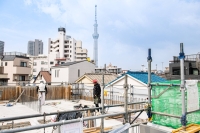
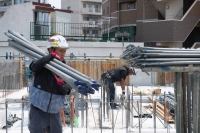
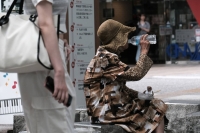
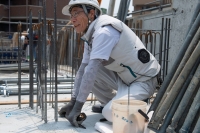
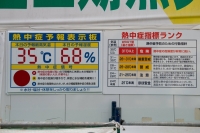
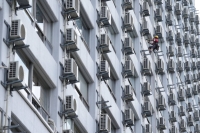

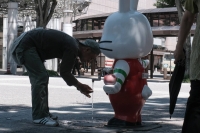














With your current subscription plan you can comment on stories. However, before writing your first comment, please create a display name in the Profile section of your subscriber account page.